
Management Contracting
مهر ۴, ۱۴۰۳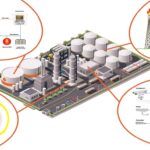
Optimization of Processes in Oil, Gas and Petrochemical Industries
مهر ۴, ۱۴۰۳Introduction
FEED stands for Front-End Engineering Design, which is performed after the completion of conceptual design or feasibility studies. At this stage, various studies are conducted to identify technical issues and estimate initial investment costs before starting EPC (Engineering, Procurement, and Construction). This work is typically contracted as an optional agreement or through a tender with EPC contractors. The product of this activity is called the FEED package, consisting of dozens of files, which will serve as the basis for bidding the EPC contract.
It is essential to reflect the client’s objectives and specific project requirements accurately in the FEED package to prevent significant changes during the EPC phase. The FEED work for a large project, such as an LNG plant, takes about one year. Since maintaining close communication with the client is crucial, it is common practice for the client to be stationed at the contractor’s office throughout the execution of the work.

What is FEED?
FEED is an initial engineering phase where engineers create a preliminary engineering design before conducting detailed design. This phase occurs right after the conceptual design but before the detailed engineering drafting in project management.
Various studies are conducted as part of FEED to determine the budget required for the project. The responsibility for conducting this study is typically assigned to an EPC (Engineering, Procurement, and Construction) contractor or a FEED consultant. However, in many cases, an EPC contractor performs the FEED study, as the FEED phase precedes the EPC phase. Therefore, the findings from the FEED, known as the FEED package, are essential for awarding the EPC contract.
Importance of FEED Study
The engineering and design study of Front-End Engineering is the most critical stage in the final investment decision-making process of a large project. Major infrastructure projects or oil and gas projects are highly complex and technical, requiring engineers to consider thousands of specifications. The FEED study ensures that the details of the planned project are well conceptualized before actual construction or implementation takes place.
The significance of Front-End Engineering can be outlined as follows:
– It provides all technical specifications required for the project and gives the owner a rough idea of the budget necessary for the successful execution of the project.
– The FEED study outlines the details of a planned project between the project owner and the EPC contractor.
– Stakeholders can refer to the FEED documents for crucial insights regarding budgetary and technical details to make more informed decisions for the FID (Final Investment Decision).
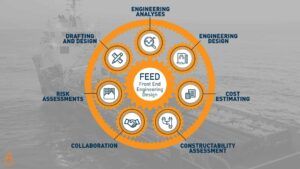
Factors to Consider for the FEED Study:
Front-End Engineering provides a preview of the project before the detailed plan is ready. While there is no specific methodology for conducting a FEED study, engineering service companies involved in FEED consider various factors to validate the final FEED package.
Here are factors to consider before conducting a FEED study:
– Degree of Automation: Each project is unique; hence, the degree of automation varies from one project to another. Determining the degree of automation helps FEED engineers calculate labor costs, equipment, and layout.
– Output Rate: To achieve a specific operational output level, facilities may require specific prerequisites. Identifying these output requirements provides a better idea of the overall project timeline and costs.
– Material Specifications: The geography of each project is different, and as a result, the materials required for construction and operation may vary and be project-specific. Thus, the engineering team must assess material compatibility and its subsequent cost within the budget.
– Standards and Guidelines: Each industry has specific standards and procedural guidelines. Many industries also have regulatory frameworks. This requires the FEED project manager to adhere to these standards while designing production facilities, equipment, and production lines.
– Assumptions, Exclusions, and Potential Issues: The engineering team must critically analyze any potential issues that may arise postcommissioning of the facilities. They should also make assumptions and exclusions that may likely impact the project during execution. This is one of the primary objectives of FEED, and this analysis is a vital method used by the FEED team.
– Potential Development: Sometimes, the FEED process includes plans for future development of the facilities. However, a timeline for inclusion is typically specified.
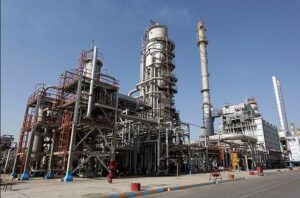
Inputs Required for FEED Study
The accuracy of the FEED project depends on the inputs provided to the FEED engineering contractor. The engineering team conducting the FEED requires various inputs for a successful FEED study, including:
– Scope of engineering work
– Feasibility study reports
– Project site details
– Standards and operational guidelines details
– Client’s technical practices
FEED Deliverables
The outputs of FEED include various deliverables provided by the Front-End Engineering Design upon completion of the study:
– Final plot plan
– Data sheets for instruments and valves
– MDS (Mechanical Data Sheets)
– P&ID (Piping and Instrumentation Diagrams)
– Overall arrangement of main equipment and piping drawings
– Cost estimation
– Line list
– HAZOP report
– Project execution plan, HSE plan
– Operational philosophies
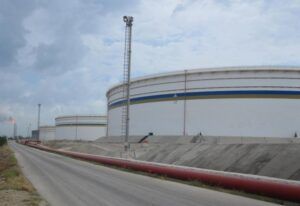
Application of FEED in Industries
Front-End Engineering Design finds its applications across various industries, especially before the commissioning of production facilities. Here are sectors that utilize FEED in different stages of their programs:
– Construction
– Oil and Gas
– Automation
– Chemical Processing
– Process Industry
– Manufacturing
– EPC
– EPCIC
– Equipment Design
– Process System Design
– Pharmaceuticals
– Petrochemicals
– Refining
– Production Line Design
– Machine Vision
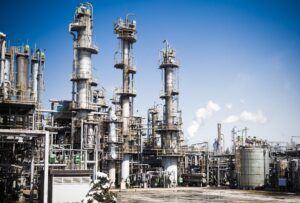
Anil Pars Industry Process Company leverages its Specialized knowledge and Experience to Offer a Comprehensive Range of FEED Study Services, Including:
– Conducting all basic engineering studies (FEED) for industrial projects
– Providing detailed and comprehensive reports on all study stages
– Full compliance with relevant international standards
– Commitment to quality, accuracy, and speed in project execution
With a proven track record and a team of experienced specialists, SANILCO Industry is ready to collaborate with various industries in conducting FEED studies.
Advantages of Choosing SANILCO Industry:
– Long-standing and distinguished history in executing FEED projects
– Team of skilled and experienced specialists
– Providing high-quality services in accordance with international standards
– Competitive and reasonable pricing
– Commitment to timelines and providing services as scheduled
We take pride in contributing to the advancement of your industrial project goals and achieving success through our high-quality and dedicated services.
Conclusion
FEED studies (Front-End Engineering Design) serve as a crucial phase in the development process of industrial and execution projects, playing a key role in reducing risks, costs, and project timelines, while also enhancing its final quality. These studies encompass a range of preliminary detailed engineering activities that prepare the groundwork for detailed design and project execution.

